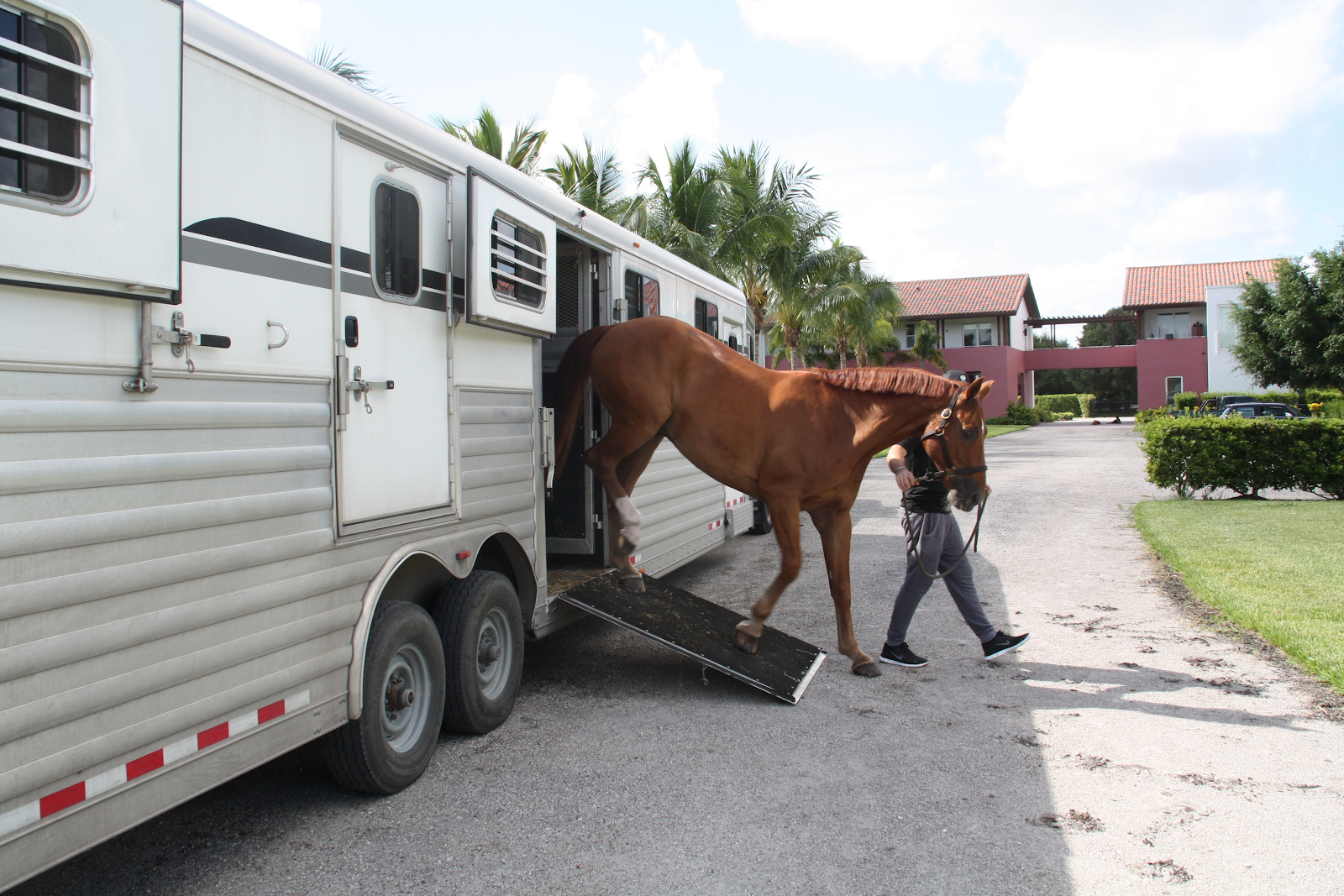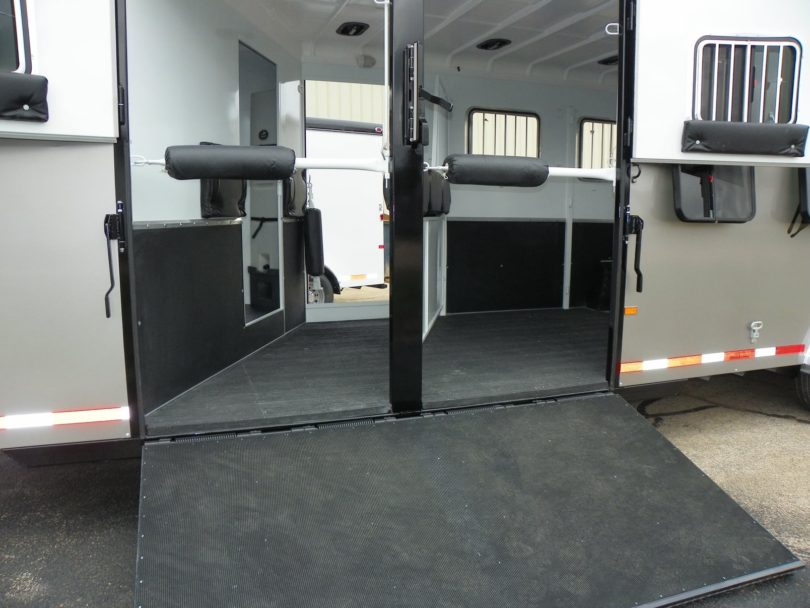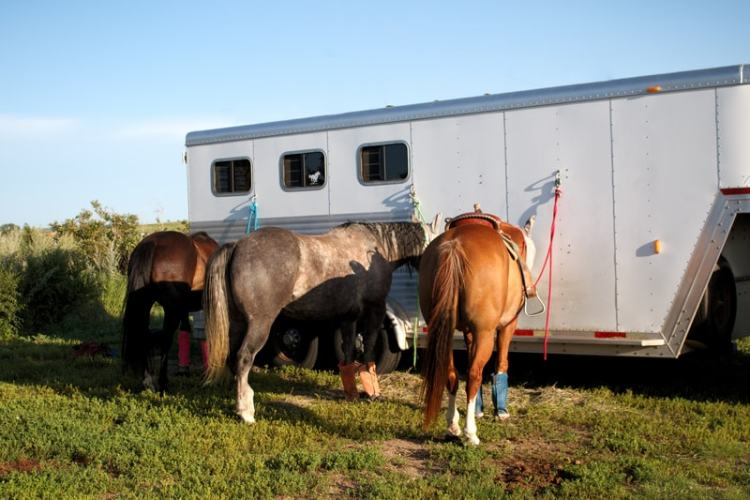Planning a trip with your horses requires immense planning and proper execution. When you start to plan any trip, you must consider several things.
Relocating your horse to a new region is a difficult job. From scheduling to packing all the necessities, ensuring your horse is safe and comfortable throughout the journey must be the aim.

Tips for Traveling With a Horse
Pointers to Keep in Mind
- Make sure that your horse is healthy when you plan your trip.
If you expect your horse to stand in the horse trailer while on the journey, it must be in good health.
Typically, these horse trailers transporting your horses are either too cold or hot. The temperature depends upon the season that you plan your trip.
- When you plan a long trip, your horses can get exhausted.
The usual nature of horses is to roam around freely. Restricting them to a closed space with a decreased view of the outside world and apprehended motion is bound to make the horse uncomfortable.
Your horse feels exhausted and spends energy while going in a trailer. And especially for longer trips, the actual pressure they get through increases dramatically.
It's true that horses usually have to work hard when they need to maintain their balance while traveling in a horse trailer.
Moreover, when there are unexpected speed and speed brakes, the horse cannot anticipate the movements.
Therefore, make sure you drive carefully and take appropriate rest breaks on your journey.
- Make sure to get your horse in good health before the trip.
Ensure you watch out for your horse's recuperation time after an exercise. Moreover, be aware of focusing on their hydration.
This is because horses tend to lose water and electrolytes during preparation, particularly in blistering environments.
Given that your horse's pressure, pulse, or breathing is raised for a lengthy period, it might have a respiratory sickness or be ill-suited for movement.
A short workout regime works perfectly and generally facilitates the horses to stay fit and healthy for a long journey.
- Keep your horse hydrated before you set off for the trip.
Your horse will not be familiar with the trailer stall's interior, and it will be a new space altogether for it.
In addition, with the hot environment, unfamiliar sounds, and excessive sweating of the horse, your horse will be agitated. In the hot weather, the horse is likely to get dehydrated.
Getting dehydrated is a hazardous condition during the journey; therefore, it's essential to attend to this situation immediately. If left untreated, it can result in colic, severe conditions, and death.
In most cases, horses might be reluctant to drink on the way. But, for the initial few hours, beginning the outing with a very much hydrated horse is fundamental.
- Make sure you begin hydrating your horse a week before your trip.
It's wise to begin a hydration program beforehand. It will not be good to see your horse suffer due to dehydration. To prevent anything unfortunate, keep the horse well hydrated at least a week before the trip.
Also, starting a hydration program well before the actual event is a trick runners use when preparing for a marathon.
Hydrating days or even weeks before the trip is also beneficial to prevent anything misfortune from happening. Also, this will help in maintaining the electrolyte level.
- Add salt to your horse's diet to increase water consumption.
You must be aware of additives and supplements available for horses. You can add them to their food to increase their water intake.
Usually, horses refuse to drink water. With these additives, they feel thirsty and consume a good amount of water.
Alternatively, you can add a teaspoon of salt to their food, making them thirsty. Either way, you will be able to keep them hydrated.
When you make any stops, offer your horse some water to drink. Take as much time as is needed and permit a lot of time for it to get hydrated. Ensuring your horse is hydrated during the outing is basic to its wellbeing.
- Keep a tab for any signs of dehydration in your horse.
There are several basic ways to look at your horse to infer whether it requires water.
First, take a look at its gums. Hydrated horses likely have pink gums. However, if they look pale, do a “skin tent” test.
Ordinarily, a pony's skin is highly versatile. However, given that you pull up the part close to the wilts and it stays raised like a tent, it's probably dehydrated. And needs water and potentially electrolytes as soon as possible.
Let us assume that your horse has dried out. In this case, you must take it out of the horse trailer. And make sure to bring it to a concealed region. Then provide your horse with water and electrolytes as quickly as time permits.
Next, if there is a good amount of water available, wash your horse and give it a nice sponge bath. And lastly, scratch off the abundance of water.
- Make your horse familiar with the horse trailer.
Related: Extreme Horseback Riding in Colombia

When your horse rides in the trailer for the first time, make sure it's not a long journey.
Your horse needs to be familiar with the trailer you plan to use. This will make the entire process of loading and unloading significantly easier.
Before beginning anything else, teach your horse to stack and dump before the trip, as this will decrease the pressure related to the journey.
Stacking a pony not familiar with getting in a trailer is distressing and can prompt unfavorable ailments like ulcers.
So invest an adequate measure of energy before your excursion getting your pony, however agreeable and conceivable with stacking and pulling as you seem capable. Uplifting comments with treats frequently produce positive outcomes.
As well as stacking, your pony ought to be familiar with the style of trailer you're utilizing for the excursion.
If you use one of the double d trailers' Iq horse trailer, things get easier. They offer comfortable and unique designs according to your needs and requirements.
- Ensure the good health of your horse before a long trip.
Long before an outing, have your pony thoroughly inspected by your veterinarian. He might get an issue you haven't seen and can address ahead of your excursion.
While traversing state lines, veterinarian endorsements and Coggins tests are probably required. These reports are required in practically all states.
- You can wrap your horse's foot as well.
Wrapping your horse's foot and chime boots offer help and security for ponies while you are on a trip. But, be that as it may, be cautious while involving them for long excursions; they can thwart blood dissemination and cause injuries.
Check your ponies' legs during each rest stop if you utilize wraps. We wrap our pony's legs when we pull them, yet they are accustomed to wearing leg wraps.
If I possessed a pony that never wore leg wraps, I wouldn't wrap the pony's legs interestingly and then load it in a trailer.

Recommended Safety Measures
- Use a leather halter when hauling horses.
It's better to haul your horses using a leather halter because they're likely to break under the pressure and strength of your horse.
It would be best if you did not use nylon straps to haul your horse while traveling. However, if you feel comfortable using nylon straps, make sure you utilize one with a breakaway element.
- Carry all the required paperwork.
You must complete every paper before you plan any trip. You must have permission and all the documents ready.
The organizer should incorporate an ongoing Coggins test, attested by veterinary examination, and records to lay out responsibility for your horse.
- You must have a “negative Coggins” test to travel with a horse.
A Coggins report asserts whether your horse has tested negative for equine infectious anemia (EIA) during a particular time period.
EIA is a lethal viral irresistible illness that is exceptionally infectious. Therefore, a negative Coggins test implies the horse is immune to EIA antibodies.
A Coggins test reports the pony's age, breed, name, and enlistment number of the veterinarian who presented the blood test. While voyaging, affirm the Coggin prerequisites for each state you hope to board your pony.
Many states require a negative Coggins test in no less than a year. However, a few states have a lot more limited time restrictions.
Conclusion
Planning a trip with your horse requires appropriate consideration of travel methods and specific necessities. A good work plan ensures a safe and stress-free journey for you and your horse!
Do not forget to keep your horse hydrated and continuously monitor its nutrition intake. Be aware of your location and be safe while you travel.
______
This story is brought to you in partnership with Double D Trailers.
Planning a trip? Go Backpacking recommends:
- G Adventures for small group tours.
- Hostelworld for booking hostels.
